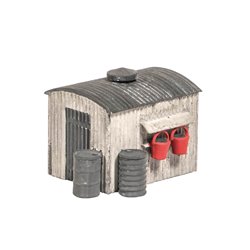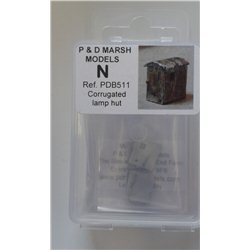Static grass puffer bottles work by manually charging model grass fibres with static electricity. When the charged...
No products
Product successfully added to your shopping cart
There are 0 items in your cart. There is 1 item in your cart.
Search Tips
What are lamp huts and where would they typically be located?
Lamp Huts were small structures, made of brick or wood that were used to store signal lamps and their associated supplies including lamp oil. These lamps were needed to illuminate signals and station buildings at night and in reduced visibility. They were quite often built with an arched roof and a ventilator cowl to vent off potentially explosive fumes from the lamp oil kept inside.
Lamp Huts were typically located at strategic points along the railway track, such as junctions, stations, and crossings. They were often positioned in a way that provided a clear view of the track and allowed the signal operator to observe the movement of trains.
Invariably the huts could also double up as a minor repair and maintenance workshop for the lamps and other associated equipment. Given the need for a large number of lamps to effectively illuminate signals and station buildings, Lamp Huts were not only a common sight but also an essential part of maintaining safe operations on the railways.
Click here to receive the tips weekly in your mailbox. You can unsubscribe at any time.









